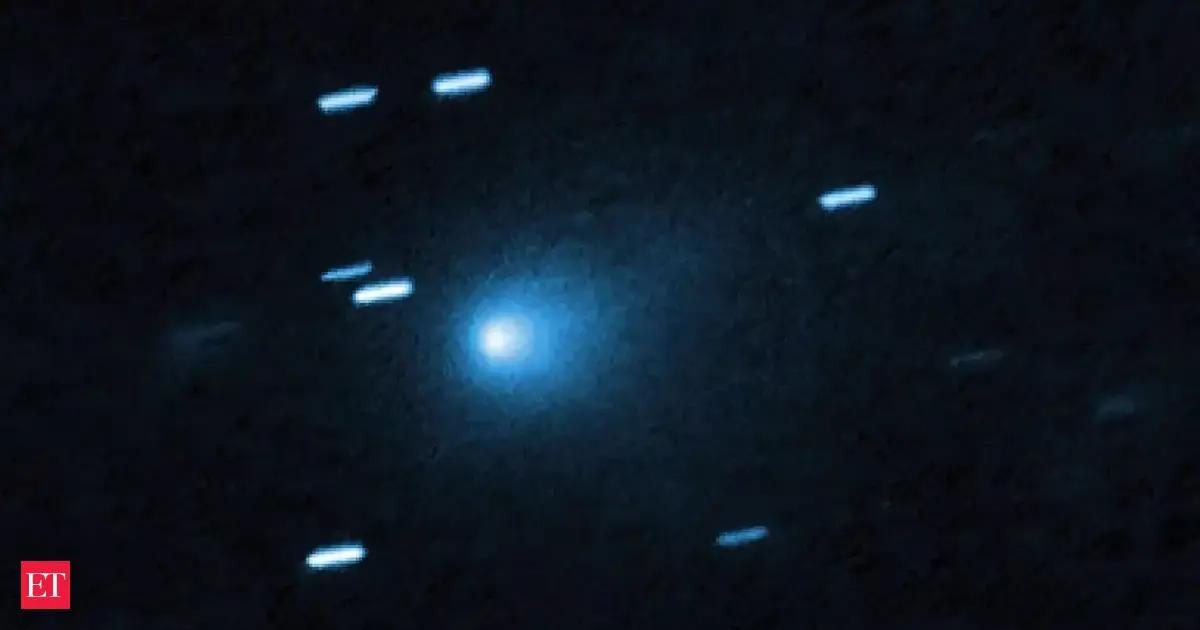Copyright downtoearth

When the fog lifted at 5 a.m. on 23 January 1967, an unmarked US military transport plane landed at Delhi’s Palam airport. In its steel belly were disassembled parts of machines and 17 atmospheric scientists from the Naval Ordnance Test Station (NOTS), China Lake, California. This was a secret mission, and no entries were made for the public. A weather reconnaissance and seeding aircraft came with the American ‘assistance’ of $300,000 (3 million in 2025). The aid was to alleviate Bihar’s persistent drought, what Time magazine called “one of the greatest humanitarian crises of the year.” The drought morphed into a famine and brought India-US diplomacy to a critical level. US President Lyndon Johnson declined giving food aid and offered agricultural technologies instead. Johnson was miffed with India’s prime minister Indira Gandhi over her criticism of US involvement in Vietnam. He was anxious about India’s growing proximity to the Soviets. This technology that arrived was intended to ‘make clouds’ and drop rain over Bihar’s parched land. NOTS was previously tried to bring rain over the Caribbean (codenamed Project Stormfury). It had also attempted to prolong the monsoon season over Laos and Vietnam to disrupt North Vietnam’s supply routes (Operation Popeye). The India project was codenamed GROMET. In 1967, Bihar’s monsoon had been deficient and had low winter cloud cover. To placate Pakistan, the technology was hastily offered to them too. The rain-seeding project began with utmost secrecy in India. To avoid raising false hopes, there were no discussions held in the states or in Parliament. If the rains came, the crops could be saved. India would showcase this as a scientific breakthrough to the world. If it failed, it would be consigned to vaults of the Central Intelligence Agency. The clouds did not cooperate. For several days, the skies were cloudless. Spotty ‘seedable’ clouds appeared only in mid-February. Some large clouds produced heavy rain (but not where they were intended), others brought light rains, but mostly there was no rain at all. The results were, obviously, disappointing. The poor performance of rainmaking in India was less of a disappointment to the US than its utter failure of the “weather weapon” in Laos and Vietnam. In Southeast Asia, the misadventure to fight the communist rebels with rain, leaked to the media and became public knowledge. In India, however, fearing criticism from the scientific community for being a part of the strategy of using cloud seeding (CS) as a weapon, the Indian experiment was hushed up. When rains returned and averted a full-fledged famine in Bihar, scientists went back to the field to continue to tinker with it.Since the 1940s, scientists on both sides of the Atlantic had made clouds in labs. Clouds form through a process called nucleation. In nature, dust, smoke particles, or sea salt have tiny electric charge which accrete moisture around it and become clouds. Salt, dry ice and silver iodide are some ways to supercool water droplets and make them heavy enough to drop as rain. Armed with this information, American scientists believed they could bring rain when there was none. Or take away clouds to inflict drought over an enemy. Post World War II and in the Cold War years, weather modification was being perfected as a new weapon.India was among the early adopters for rainmaking. Indigenous experiments began in the 1950s and have been taking place since. India began large-scale field experiments over the Arabian Sea. In 1999, it began Indian Ocean Experiment (INDOEX); and in 2002, the Arabian Sea Monsoon Experiment (ARMEX) — both also provided insights into the mechanics of the monsoons. In 2006, Integrated Campaign for Aerosols, Gases and Radiation Budget (ICARB) was launched. Since 2009 to 2015, the Indian Institute of Tropical Meteorology in Pune led the Cloud-Aerosol Interaction and Precipitation Enhancement Experiment (CAIPEEX) conducted over land and both arms of the Indian Ocean and studied rainmaking. The results get published in highbrow journals about which the public gets to hear very little.Since 2020, at least 39 countries have tried CS. Only a handful of field trials have been published like those from Australia, China, India, Israel, South Africa, Thailand, and the United Arab Emirates (UAE). These studies confirm that CS can increase precipitation by 10 to 20 per cent. But failure rates can be as high as 60 per cent. Australia’s efforts to alleviate drought have failed. Argentina and Austria have tried it to reduce the intensity of hailstorms. Many African countries hire contractors to induce rains for agriculture and drinking water. China, South Korea, and Pakistan have tried it to smother their smog. In 2008, Beijing’s air purportedly became breathable before and during the Olympics. Indonesia has attempted it to suppress wildfires. No country has shown repeatable success.‘Expensive, unfeasible, and dangerous’There can be no fixed model for CS. This is because there are too many moving parts in the process in making rain. Horizontal and vertical wind systems, height and type of cloud, volume of water held, dust and particulate transport, temperature gradient, among many other factors are at play. Given the many uncertainties, CS is expensive, unfeasible, and even dangerous.Limited attempts to communicate about the science behind CS has fuelled widespread scepticism. A 2021 Pew Research Center poll stated that while roughly half of American adults think cloud seeding could reduce climate change impacts, most oppose it due to its potential downstream impacts. .DTE Coverage: Dubai Floods 2024.Some ask if the April 2024 Dubai floods or July’s Texas flashflood were cloud seeding gone awry. CS is also a burgeoning business but one without regulation. In Colorado and Idaho, ski lodge owners can hire these companies to channel clouds to drop as snow. The Swiss are using it to grow their depleting glaciers. A few attempts have failed to smother hurricanes and typhoons. Lack of policy is also creating suspicion and stoking conspiracy theories. CS is news again. It is going to be deployed over Delhi to improve its air quality. The success of the intervention will depend on whether the skies have enough clouds before CS is done.‘Humility, not hubris’This brings us to some ticklish questions. How does one regulate such diversion, this pilfering of clouds that would have fallen elsewhere? Legally, no specific global treaty for regulating cloud seeding exists. After the Vietnam War, the US adopted the Weather Modification Reporting Act, 1972 to regulate CS. To prevent its weaponisation, a global treaty called the Environmental Modification Convention (1977) was adopted. ENMOD prohibits using weather modification for warfare but allows applications like drought relief. The Convention on Long-Range Transboundary Air Pollution (1979) indirectly applies to CS as chemicals can potentially cause cross-border pollution. Ecotoxicologists warn that silver iodide can contaminate soil and injure microbes and aquatic organisms. There is no comprehensive study on how repeated CS will impact ecosystems or affect communities. The United Nations Framework Convention on Climate Change and Espoo Convention (1991) encourage sustainable environmental practices and transboundary impact assessments but do not explicitly govern weather modification. The absence of binding international regulation leads to sovereignty disputes and liability challenges. In Thailand, in 2015, farmers took the state to court alleging that CS “diverted” rains from their farms. China mandated a law in 2015 to use cloud seeding much to the dismay of its neighbours. Iraq and Iran have raised concerns about the UAE’s use of CS.Even in the absence of a global framework, conflicts of interest are rife. The Director General of the World Meteorological Organization (WMO) is also the head of the UAE’s centre of meteorology, and its specialised agency UAE Research Programme for Rain Enhancement Program (UAEREP), which promotes the technique. At WMO, he has aggressively pushed for CS.WMO’s 2015 statement sees CS as a climate mitigation strategy. Earlier, WMO’s report cautioned that the science on CS was imperfect, and at best it worked on local scale. This rider is now missing from WMO’s recent reports. Although the Intergovernmental Panel on Climate Change (IPCC) partners in WMO’s rain seeding meetings, it officially does not have a position (barring a section in a chapter of IPCC AR6 WGI). This, in principle, will leave IPCC’s scientists in a bind. Should they recognise cloud seeding, it will open a floodgate to adopt geo-engineering, an area most experts are uncomfortable with. Cloud seeding is essentially geo-engineering. It uses a mineral, manipulates winds and clouds to modify local and regional climate. When done at a large scale, it will impact Earth’s radiative budget and water cycle, with potential effects on global climate.Cloud seeding in its current state is theoretically valid, yet in practice, premature. Several critical barriers hinder its implementation. Science lacks the necessary tools, materials, or computational power to make it predictable. We over-rely on idealised models, which succeed in controlled settings but fail spectacularly in the real world. We struggle to achieve stable, error-free systems even in test tubes (like CRISPR gene editing) or closed systems (quantum computing). Experimental reproducibility issues raise a red flag. Like in cold fusion, where experiments failed to deliver consistent results across laboratories, CS too is inconsistent. Good policy must recognise the gap between laboratory success and field application. It is important to invest in CS, find critical areas of interventions including mitigating cyclones, droughts and wildfires. More important, it needs a globally binding treaty. Until we understand nature’s workings, we must act with humility, not hubris, or plain stupidity..Pranay Lal is a natural history writer and a public health workerViews expressed are the author’s own and don’t necessarily reflect those of Down To Earth



